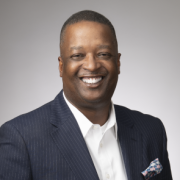Connecting Employers, Federal Agencies, and Older Workers
Our aging workforce has been one of the most important issues facing our country. By 2028, older workers will represent more than 25% of our labor force. This is good news. Older workers bring much-needed experience, emotional intelligence, and generational diversity to our workplaces.
But only 4% of employers have committed to programs that help integrate older workers into their talent pool. And, as workers age, the opportunities to update their skills are less and less available.
We partner with private employers on building an age-inclusive workforce, with Federal agencies on staffing solutions, and with older job seekers on upskilling programs, on-the-job training, and employment assistance.
Our Partners
Private Employers
The Center partners with employers to connect them with our national network of workforce development specialists, reach older workers, build programming, and create custom partnerships aligned with their organization’s goals.
Federal Partners
The Center partners with Federal agencies, such as the Forest Service and the National Park Service, on staffing solutions. We provide skilled and experienced older workers to increase capacity without adding an administrative burden.
Our Job Seekers
Women
By 2050, the number of women 55 and older is projected to grow by more than 26 million. Most of the increases in the labor force participation among older workers will come from women. However, the employment hurdles facing women only magnify with age. The Center has extensive experience working with older women, including older women of color, to create a path to meaningful work.
Rural America
Older workers in rural settings have a unique employment challenge because of specific barriers posed by rural settings, coupled with the specific skills required by rural industries. The Center is in key areas to reach dispersed rural older workers. The Center’s partners have relationships and expertise with rural communities to provide scalable workforce development solutions and training in the skills required by employers in rural communities.
Veterans
More than half of unemployed Veterans are age 45 or older. However, the majority of workforce programs for Veterans are only available to younger Veterans. The Center bridges the gap by providing access to the training needed for emerging jobs and careers.
Formerly Incarcerated Job Seekers
One in four American adults has a criminal background. Older workers who were formerly incarcerated not only face the same challenges as older workers but the additional barriers associated with their criminal history. The Center, through our sister innovation hub, CWI Labs, provides a path to stable employment, one of the biggest levers to reduce recidivism.

There is a socio-cultural bias toward a shrinking youth workforce. All the while, the 50+ workforce in America is a beckoning frontier on the verge of discovery. We choose to lead workforce development of 50+ Americans and transform the economy and generations of workers.
Gary A. Officer, President & CEO
